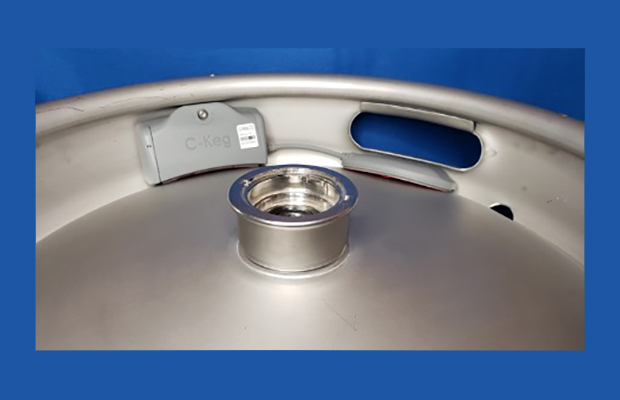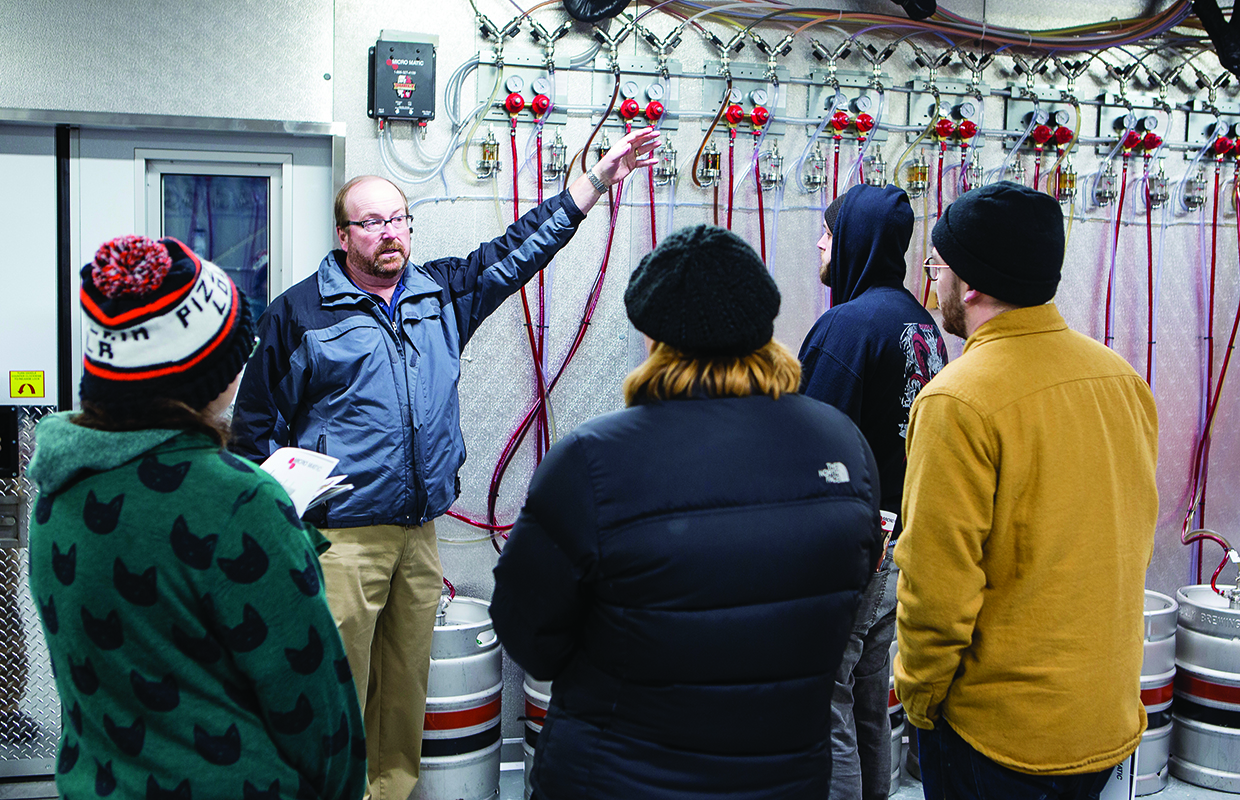
The US craft beer scene has seen explosive growth over the past five years. In fact, the number of US breweries increased by almost 60% from 2015 to 2020. As breweries open across the country, many brewery owners are also first-time business owners. Faced with mastering the financial know-how and strategy needed to move past their break-even years (and, if they’re fortunate, grow their business) many brewers are looking to part-time strategic financial resources for support.
Whether you are a distributor, brewpub or niche market brewer, some brewery financial considerations will remain the same (eg. the large upfront capital needed to get started and the several month runway to get those first tanks online and brewing). However, strategic financial conversations should shift per brewery identity.
In recent years, I’ve had the opportunity to work with various brewery models as their CFO resource. I have even advised some as they’ve shifted their identity from one to the other to adapt to changing markets. Below are strategic financial considerations for owners based on their brewery type, plus a few more for every brewery owner.
Distributor-Focused Brewer
Low margins, high volume
Distributor-focused brewers will make lower margins per beer sold, making beer “pull-through” in grocery and big box stores crucial. When it comes to making the numbers work for distributors, it’s all about increasing volume. This means both more beer made and more beer sold. Let’s start with more beer made, where a CFO-level resource can come in most handy in controlling costs and ensuring healthy cash flow.
Before increasing production, a good CFO or strategic financial resource will support the brewer in understanding if the timing is right. This helps to ensure that they will not be overextended financially during period in which they will be scaling up. The last thing a new, startup brewer wants is excess unsold inventory taking up space and worse, slowing down cash turnover.
For example, let’s say a brewer would like to grow from 3,000 to 5,000 barrels a year. Additional capacity means more tanks (ie. more upfront capital). A CFO resource can help both calculate and make sure to ask: What does the payback timeline look like for each new tank purchased? Will it be 9-12 weeks, 16 weeks? With the increase in equipment may also come the need for additional labor. Can we cover the cost during that time?
Maybe the timing is not right. Other than the brewery’s unique financial situation, seasonality can also come into play when it comes to timing growth. All of these considerations should be taken into account when making the decision for a big “cash event.” A strategic financial resource will make a big difference in performing a formal return on investment analysis (ROI) to validate (or advise against) the decision so that the owner can move forward with confidence and less risk.
Brewpub or Taproom
Average margins, medium volume
Restaurant-breweries (aka brewpubs) and taprooms sell 25% or more of their beer on-site. The difference is that a brewpub will also operate significant food services. The beer is brewed primarily for the sale in the restaurant and bar. Brewpubs may also choose to distribute their beer as well or sell beer to go. Taprooms may sell basic snacks or other food items, but they will rely more heavily on beer sales.
Additionally, labor costs are more of a potential cost pitfall for the brewpub or taproom (vs. distributor) in regards to cash flow. Being open means having individuals paid by the hour — regardless of how many individuals buy beer and food at the location that day.
Changing demographics of certain brewpub locations may also mean that these breweries with eat-in options slightly change their model over time to adapt. This can mean everything from expanding the menu, to renovating the dining areas, to opening new locations with slightly different identities. Perhaps they even transform from taproom to brewpub, or brewpub to relying more on distribution.
All of these decisions can have considerable financial impacts and these impacts are areas a CFO can consider and help evaluate. For example, if a new direction means renovations, how long will the location need to be closed, and what would that look like from a cash flow perspective? What will the return on investment look like? How do we secure funding, if needed?
Let’s say we’re opening a new location and need to button up financials before presenting them to lenders and business partners. This is a strategic financial function that should be left to a financial expert or resource. We may even choose to operate the new location, based on its identity as a taproom, brewpub, etc. as an entirely separate business entity. All of these considerations are strategic and may be beyond the expertise of an individual who started the business as a result of their passion for brewing.
Niche Market
Higher margins, lower volume
A niche market brewer is appealing to the “beer nerd.” Specializing in a very specific type of beer (barrel-aged beer, higher gravity IPAs, hazy IPAs, etc.) will mean that this brewer’s market is automatically smaller and more limited, making margins crucial.
These brewers will sell their product to the local beer shops, brewpubs and taprooms rather than larger distributors. A CFO resource to help analyze margins will be crucial. Margins by beer brewed, margins by each location selling a brewery’s beer, and consistent pricing across shops are key things to watch for in this business model. When going niche, ensuring the pricing model is healthy and sustainable will be the key to ensuring the health of other financial metrics like cash flow and margin.
Additionally, knowing the market and pinpointing location will be essential. Selling beer at the wrong location where the “beer nerds” don’t hang out will mean your beer sits in the shop longer. Utilizing the correct technology to help market beer will also be crucial in achieving niche market sales at healthy margins.
Brewery Strategic Financial Considerations
At a high-level, all brewery models share some financial considerations. Accurate forecasting and healthy cash flow will be goals of any brewery. Below are just a few ways that a CFO-level resource can help to ensure that these two financial KPIs are in good shape.
- Cash Flow Analysis – We call this “sources and uses.” In other words, where are you getting money from and is it being used. With the help of the owner, we can forecast sales and thus create a margin forecast by looking at the projected expenses. With the high upfront capital expenses required to begin brewing beer, whether or not they can cover monthly payments with operating cash low (i.e. not rolling debt over and over) will be essential.
- Controlling Expenses – Labor, repairs and delivery (of beer and product) are places we can look to quickly save on monthly expenses. Utilities, including water, is also a big cost for all brewers. In certain municipalities there are programs that can help manufacturers with utilities costs. Registering as a manufacturer or a restaurant may determine whether a business can take advantage of these programs. Labor is always a culprit for increased operating costs and is needed not only to serve beer in the case of a taproom or brewpub, but also to operate production equipment and coordinate shipments in any of the previously mentioned models.
- Pricing Model – How much does it cost exactly to brew each type of beer? The pricing model is not always the first place we look to help the brewery save money. This is because hops and other ingredients need to stay the same to maintain the consistent taste that the consumer expects. However, what we sell the beer for in the taproom, how the food is priced in the brewpub, and how consistent our pricing is across distributors are all important places to look to optimize. In some cases, we may identify that one beer is just not as profitable and not a flagship beer, so we decide to retire it.
- Operating Expenses – A good CFO resource will consider unavoidable operating expenses (property taxes) into projections and can help to optimize those operating expenses that are controllable (ie. non-cost of goods sold, labor, administrative staff, sales team, utilities, paper products and linens).
- Debt Schedules – Loan payments can greatly impact net cash flow. A CFO resource’s goal will be to get the brewery to healthy earnings before taxes but that is not the only consideration. We have seen several businesses with healthy profits who simply run out of cash due to debt loads or sales volume that is less than they require to survive. Looking at debt schedules and knowing what the payments will look like for the upcoming or next year(s) will help set the brewery up for success.
- Tax Projections – While a strategic resource is not the same resource that will do your taxes (likely a CPA), they can point the CPA in the right direction to ensure that the CPA takes advantage of every opportunity to save taxes as well as other pointers that can be the make or break to get through those first years.
- Hops Contracts – Hops’ taste can vary greatly by region. It is crucial for the source of Hops to remain the same in order to avoid changing how a beer tastes. A good CFO resource can evaluate Hops contracts to see if there are any terms and conditions or other basics of the contracts that can be negotiated or changed in order to optimize the brewery’s financial situation and minimize risk.
In every milestone and brewery scenario, there are some big financial decisions at hand – those that can be the difference between a brewery closing its doors and long-term success. I hope that the above advice has been helpful in pointing in the right direction for places to optimize finances for a brewery, whatever the model. However, it is important to note that the above considerations are generalized, so I highly recommend seeking the help of a professional CFO-level financial resource to provide good data for smart decision making. Happy brewing!
About The Author — Jason Alexander is a CFO and business consultant for Lucrum Consulting, Inc. Jason brings over 15 years of accounting and financial management experience working with a diverse client base including insurance, distribution, manufacturing, professional services and talent acquisition. He has served in financial leadership for several Charlotte, North Carolina-area businesses. You can reach him at [email protected].




Be the first to comment